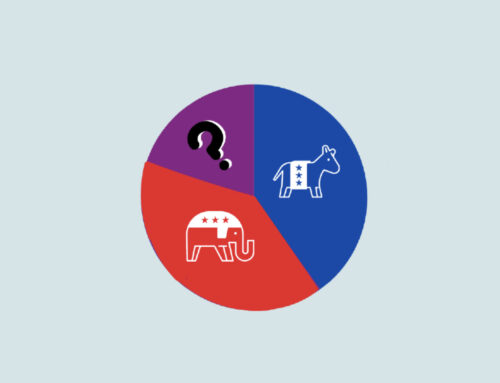By Tom Bonier, CEO
Heading into yesterday’s special election in the Buckeye state, many questioned if the abortion issue still wielded the political power it has over the past year – in Kansas, Michigan, Wisconsin – and other states where abortion rights were under attack. Some argued that Democrats have focused too much on abortion rights and the issue lacked political salience.
Public polling in Ohio suggested an evenly split electorate on the issue.
Last year, I wrote that “For many Americans, confronting the loss of abortion rights was different from anticipating it.” That reality has set in motion a political realignment that is particularly acute in states where abortion is literally on the ballot.
Voters in Ohio sent a clear message to Republicans when they voted down Issue 1 by a landslide margin, and paved the way for voters to codify the right to an abortion in Ohio through future ballot initiatives.
While it will be weeks until election administrators release data on who voted in this week’s ballot initiative, there is a lot we already know about the pro-abortion coalition that voted down Issue 1 by over 14 points.
Women Voters
Women accounted for 56% of the early vote in Ohio, higher than in any recent statewide election. The early vote is on pace to account for one in four ballots cast – a stunning metric given Republicans efforts in recent years to make early voting (and voting in general) more difficult.
Additionally, amongst voters who voted early but did not vote in 2022, women accounted for 60% of all ballots cast.
Black Voters
Black voter turnout also surged in the early vote period. Amongst those surge voters (voters who cast an early vote but did not vote in the 2022 general election) 9% were black voters, as compared to 6.7% of the 2022 early vote.
In the 2022 elections, the pro-abortion movement in states like Kansas was largely fueled by increased turnout among white women. In the Ohio special, it appears that Black women turned out in larger numbers.
Young Voters
Voters under 30 accounted for 6.7% of the early vote, and while we don’t have the early vote comparison, voters under 30 were just 5.5% of the 2022 primary electorate.
Given that the youth vote tends to skew towards election day, we expect to see younger voters accounting for a much larger share of the electorate than they did in last year’s primary.
Over the course of the next year, I’m sure we’ll continue to hear pundits asking whether Democrats are putting too much stock into the abortion issue, like they did in the lead up to the ‘22 midterms. Yet, Ohioans rejected an anti-abortion rights measure yesterday by 14%, just a year after voters in Kansans did the same by 18%. Clearly, the issue is holding its political salience, and the Ohio results suggest it may even be strengthening.
The attacks from the right on abortion rights only grow more extreme. We’ll have to see how it plays out this fall and then again in ‘24. Stay tuned @TBonier and @TargetSmart as we continue to bring you the latest data from Ohio.





